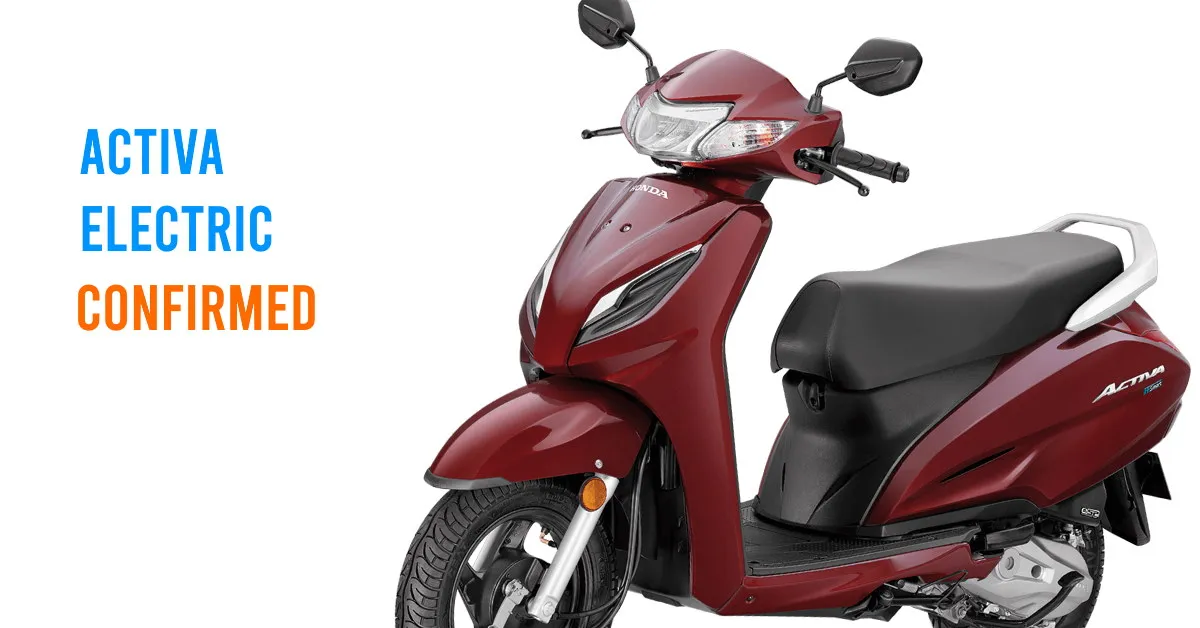Honda Activa Electric Scooter Launch In Jan 2024

Honda recently launched Activa H-Smart variant that comes with a new advanced handsfree system with car-like keyless features. At the event, Honda Motorcycle and Scooter India (HMSI) MD and CEO Atsushi Ogata also revealed the company’s EV roadmap.
As was being anticipated, Honda’s first EV for India will be the electric version of its bestselling Activa scooter. According to Ogata, Activa Electric will debut at the same time next year, that is Jan 2024. It will be interesting to see if Activa Electric can achieve the same level of popularity as that of its ICE-based counterpart.
Activa Electric battery, top speed
While most new launches in electric two-wheeler space are aiming to beat their closest competitors in terms of range, top speed, performance specs, etc., Activa Electric appears to be following an entirely different approach. Activa Electric will be focusing more on reliability.
Activa Electric will be essentially a transplant job. It appears that Honda is planning to play it safe, so as to avoid any negative developments. EV tech is new and considerable time has to be spent on testing to ensure everything works out in a smooth, safe manner. Activa Electric will have a fixed battery setup, which will reduce the risk of incidents like fire caused by mishandling.
Visually, Activa Electric will be largely the same as current ICE-based Activa. Hardware such as suspension and braking setup could also be shared to keep costs down. Activa Electric range is likely to be modest, especially in comparison to the likes of Hero Vida V1 Pro that has a certified range of 165 km.
Honda electric scooter with swappable battery
After Activa electric, Honda has plans to launch another electric scooter in India. This will be based on an entirely new born-electric platform. It will be a mainstream EV product and have capabilities similar to that of existing bestselling electric scooters in the market. As compared to Activa Electric, Honda’s second electric scooter in India will have a swappable battery system.
Honda has set a target to open battery-swapping stations across most of its consumer touchpoints in the country before launching its second EV. With more than 6000 battery swapping stations, Honda’s second EV will not be impacted by issues like range anxiety. Ownership cost can also be reduced if Honda could provide subscription-based plans that do not include the cost of battery.
While Honda’s progress in EV space may seem slow, there are valid reasons for the delay. Ogata said that they could have easily taken their EVs from China and introduced them in India. However, that’s not the case.
Honda is focusing on developing India-specific products and achieving a high level of localization. Even parts like battery packs and e-motor, which are usually imported, are expected to be sourced locally. Much of Honda’s investments in FY 2023-’24 will be allocated towards setting up EV manufacturing facilities and related infrastructure. Honda has already setup a subsidiary in India which will manufacture battery packs.
Even though Honda will be entering the EV space soon, Ogata says that conventional ICE-based scooters will continue to dominate. In the foreseeable future, much of Honda’s sales will be from its ICE-based two-wheelers. Its first EV Activa Electric will target users with limited running. For more frequent use and longer distances, ICE Activa will continue to be the preferred choice.
